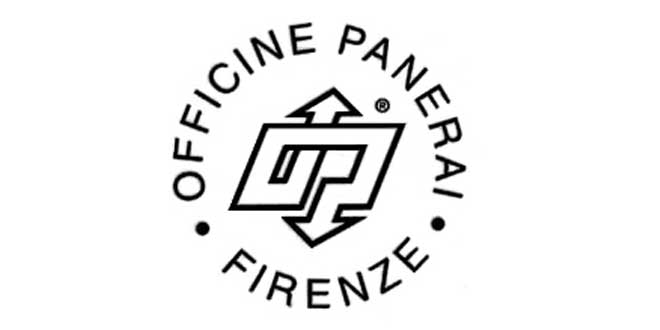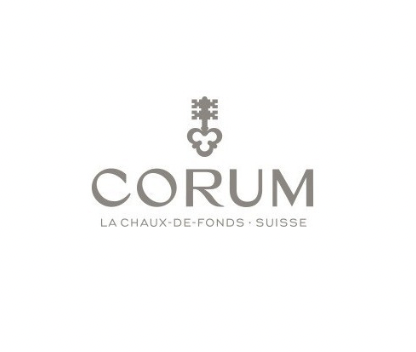Watch Facts
Quiz: 2024.02.18 Quiz (Logo)

Established in 1865, Zenith holds a venerable position in watchmaking history. Its inception marked a pivotal moment in horology, aligning with the Industrial Revolution’s technological advances. In 1969, Zenith introduced the groundbreaking El Primero automatic chronograph movement, renowned for its high frequency and accuracy. This innovation solidified Zenith’s status as a trailblazer in precision timekeeping.
The brand’s logo, an open star emblem, mirrors its name’s celestial meaning. The five-pointed star embodies aspirations for excellence and represents the guiding principles of quality, reliability, and innovation. The emblem, reminiscent of the North Star, alludes to timeless navigation and a commitment to pushing boundaries in watchmaking.

Established in 1853 by Charles-Félicien Tissot and his son, Tissot is a distinguished Swiss watchmaker renowned for its innovative timepieces. In 1853, the company began as “Charles-Félicien Tissot & Son” in Le Locle, Switzerland. Tissot marked a milestone in 1930 by introducing the first non-magnetic watch. This commitment to innovation continued with the 1953 launch of the Tissot Navigator, the world’s first mass-produced antimagnetic watch.
The Tissot logo, comprised of the brand name in distinctive typography, echoes the company’s heritage of refinement and precision. Its logo has evolved over time, yet the essence of classic sophistication remains.

Tudor was established by Hans Wilsdorf, the founder of Rolex, in 1926. The brand’s history is marked by significant milestones. In 1952, Tudor introduced the Oyster Prince, its first self-winding wristwatch. A year later, it supplied watches to the British Royal Navy, demonstrating its durability and reliability. In 1969, the Tudor Oysterdate Chronograph made its debut, showcasing a distinctive design.
The Tudor logo, featuring a stylized rose, symbolizes the Tudor dynasty, evoking notions of strength and endurance. This emblematic motif underscores the brand’s commitment to producing robust, high-quality timepieces. Today, Tudor continues to uphold its legacy of craftsmanship and innovation, crafting watches that combine heritage with contemporary style, making it a respected name in the world of horology.

Established in 1846 Ulysse Nardin has a rich history characterized by horological innovation. Its early achievements include precision marine chronometers, which garnered recognition at international exhibitions in the late 19th century. Notable historic dates include the introduction of the Astrolabium Galileo Galilei in 1985, a wristwatch with astronomical indications.
Ulysse Nardin’s logo features an anchor, paying homage to the brand’s maritime heritage and its legacy of crafting marine chronometers. This emblem reflects the connection between Ulysse Nardin’s historic contribution to accurate timekeeping for maritime navigation and its contemporary presence in the world of luxury watchmaking. The logo’s use of an anchor aligns with Ulysse Nardin’s commitment to precision and craftsmanship, bridging its historical significance with its modern horological endeavors.

Established in 1839 by Antoine Norbert de Patek and François Czapek, Patek Philippe stands as a pinnacle of Swiss watchmaking. A pivotal moment came in 1845 when Jean-Adrien Philippe joined, bringing key innovations like the crown winding mechanism. In 1868, the brand developed its first wristwatch. In 1932, the Stern family assumed ownership, nurturing Patek Philippe’s legacy.
The Patek Philippe logo, a stylized Calatrava Cross, has evolved since its introduction in 1857. Inspired by the Calatrava cross, which symbolizes a blend of art and science, the logo mirrors the brand’s core values. Its current form, a refined emblem, was introduced in the 1950s, embodying timeless elegance and tradition.
Patek Philippe is renowned for its handcrafted timepieces, exemplified by the 1925 debut of the cushion-shaped Gondolo watch and the celebrated Calatrava collection in 1932. The 1989 creation of the Calibre 89, a pocket watch with numerous complications, underscored the brand’s technical prowess.

Founded in 1860 in Florence, Italy, Officine Panerai began as a workshop, specializing in precision instruments and watches for the Italian Navy. In the 1930s, they developed the Radiomir, a luminous substance enhancing underwater visibility. By the 1940s, Panerai supplied the Italian Navy with durable, water-resistant watches.
The brand’s distinctive design elements include a large, cushion-shaped case, prominent luminescent markers, and a unique crown guard. In the 1990s, Panerai transitioned from a military supplier to a public brand, attracting enthusiasts with its bold aesthetics.
The Panerai logo reflects its maritime heritage, featuring a stylized depiction of a torpedo, honoring the brand’s historical association with naval technology. The blend of sleek design and military legacy has positioned Panerai as a prominent luxury watch brand.

Established in 1832, Longines holds a prominent position in watchmaking history. Its legacy is marked by significant milestones: The brand introduced its first movement in 1867, and by 1880, it had already earned global recognition for its timekeeping precision. In 1913, Longines developed the revolutionary high-precision chronograph movement, solidifying its reputation for innovation.
The Longines logo, an hourglass with wings, speaks to its timekeeping expertise and elegance. It was registered in 1889, symbolizing the brand’s commitment to both precision and grace. The hourglass underscores accurate timing, while the wings evoke notions of swiftness and freedom, resonating with the brand’s spirit.

Founded in 1911 in La Chaux-de-Fonds, Switzerland, Ebel is a distinguished watch brand renowned for its refined elegance and craftsmanship. In 1914, the brand introduced its first wristwatch, marking the inception of its legacy. Ebel’s commitment to precision and artistry gained recognition in 1930 when it became a supplier to the British Royal Air Force.
Significant to Ebel’s history, the year 1977 witnessed the launch of the Sport Classic collection, combining sporty aesthetics with luxurious detailing. In 1982, Ebel introduced the Sport Wave collection, characterized by its distinctive wave-link bracelet, blending innovation with design.
Ebel’s logo is a stylized “E,” representing the brand’s name. This insignia embodies Ebel’s dedication to elegance and serves as a hallmark of its timepieces. The logo encapsulates the brand’s ethos of timeless sophistication, mirroring its commitment to artisanship and enduring design.

Corum was established in 1955 by René Bannwart in La Chaux-de-Fonds. The brand swiftly gained recognition for its innovative designs and exceptional craftsmanship. In 1960, Corum introduced the Admiral’s Cup, a groundbreaking sports watch distinguished by its twelve-sided case and nautical pennants on the dial.
Significant historic dates in Corum’s journey include the 1980 launch of the Golden Bridge, a revolutionary timepiece featuring a linear movement, and the 2000 release of the Bubble watch, characterized by its distinctive domed crystal.
The Corum logo, marked by a key symbol, embodies the brand’s commitment to unlocking artistic and horological excellence. It conveys Corum’s dedication to craftsmanship, precision, and creativity.

Hublot, established in 1980 by Carlo Crocco, is a prominent Swiss luxury watchmaker renowned for its fusion of innovative materials and avant-garde design. A pivotal event in 2004 marked the entrance of Jean-Claude Biver and Ricardo Guadalupe, propelling Hublot’s transformation into a global horological force.
Key dates include 1980, when Hublot unveiled the groundbreaking natural rubber strap, amalgamating luxury with sportiness. In 2005, the Big Bang collection made its debut, combining unexpected materials like ceramic, titanium, and gold. This collection solidified Hublot’s reputation for innovative craftsmanship.
Hublot’s logo, a stylized “H,” is both its signature and a testament to its motto, “The Art of Fusion.” Representing the brand’s commitment to fusing tradition with innovation, the logo underscores Hublot’s identity as a forward-looking pioneer in horology.
